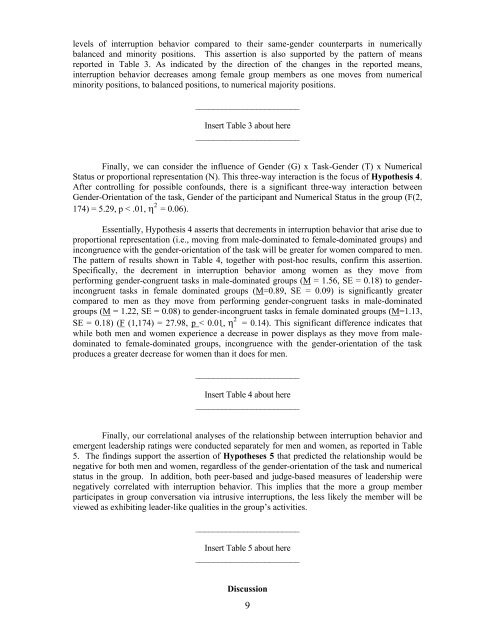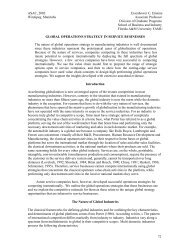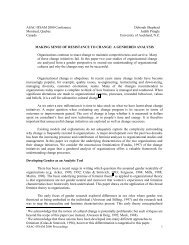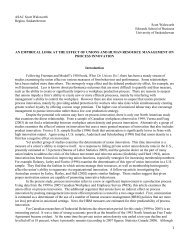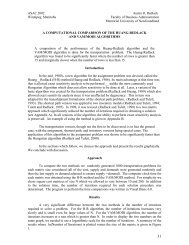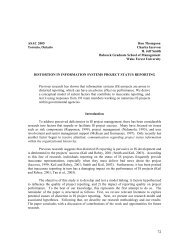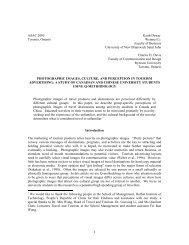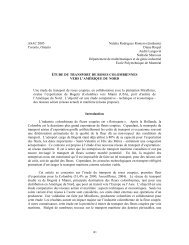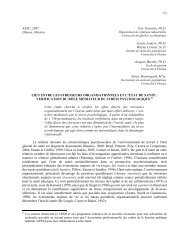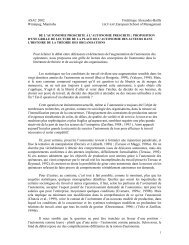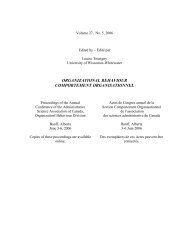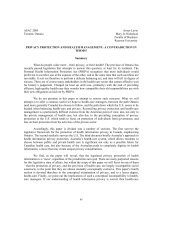Organizational Behaviour Comportement Organisationnel
Organizational Behaviour Comportement Organisationnel
Organizational Behaviour Comportement Organisationnel
Create successful ePaper yourself
Turn your PDF publications into a flip-book with our unique Google optimized e-Paper software.
levels of interruption behavior compared to their same-gender counterparts in numericallybalanced and minority positions. This assertion is also supported by the pattern of meansreported in Table 3. As indicated by the direction of the changes in the reported means,interruption behavior decreases among female group members as one moves from numericalminority positions, to balanced positions, to numerical majority positions.________________________Insert Table 3 about here________________________Finally, we can consider the influence of Gender (G) x Task-Gender (T) x NumericalStatus or proportional representation (N). This three-way interaction is the focus of Hypothesis 4.After controlling for possible confounds, there is a significant three-way interaction betweenGender-Orientation of the task, Gender of the participant and Numerical Status in the group (F(2,174) = 5.29, p < .01, η 2 = 0.06).Essentially, Hypothesis 4 asserts that decrements in interruption behavior that arise due toproportional representation (i.e., moving from male-dominated to female-dominated groups) andincongruence with the gender-orientation of the task will be greater for women compared to men.The pattern of results shown in Table 4, together with post-hoc results, confirm this assertion.Specifically, the decrement in interruption behavior among women as they move fromperforming gender-congruent tasks in male-dominated groups (M = 1.56, SE = 0.18) to genderincongruenttasks in female dominated groups (M=0.89, SE = 0.09) is significantly greatercompared to men as they move from performing gender-congruent tasks in male-dominatedgroups (M = 1.22, SE = 0.08) to gender-incongruent tasks in female dominated groups (M=1.13,SE = 0.18) (F (1,174) = 27.98, p < 0.01, η 2 = 0.14). This significant difference indicates thatwhile both men and women experience a decrease in power displays as they move from maledominatedto female-dominated groups, incongruence with the gender-orientation of the taskproduces a greater decrease for women than it does for men.________________________Insert Table 4 about here________________________Finally, our correlational analyses of the relationship between interruption behavior andemergent leadership ratings were conducted separately for men and women, as reported in Table5. The findings support the assertion of Hypotheses 5 that predicted the relationship would benegative for both men and women, regardless of the gender-orientation of the task and numericalstatus in the group. In addition, both peer-based and judge-based measures of leadership werenegatively correlated with interruption behavior. This implies that the more a group memberparticipates in group conversation via intrusive interruptions, the less likely the member will beviewed as exhibiting leader-like qualities in the group’s activities.________________________Insert Table 5 about here________________________Discussion9


